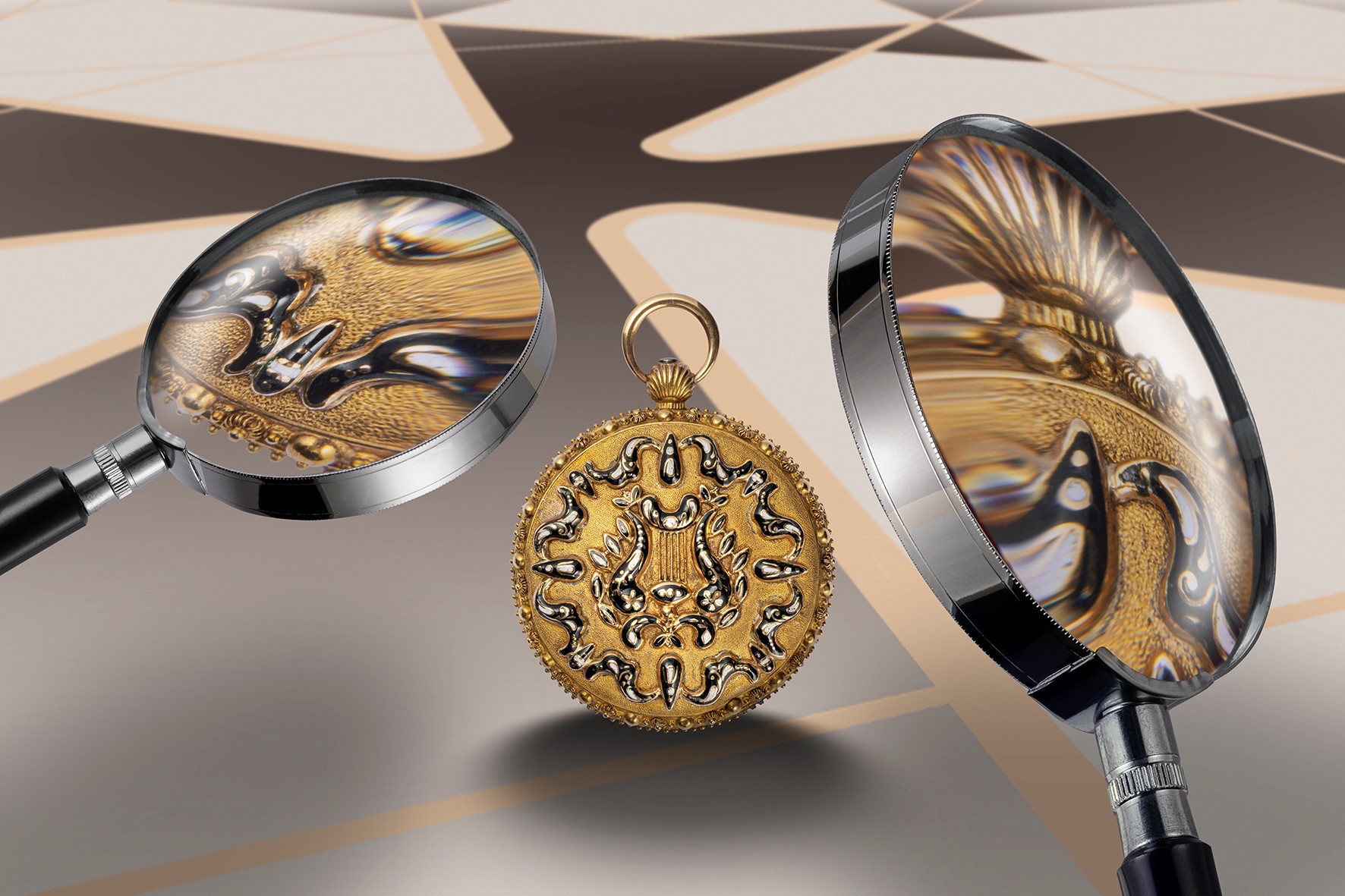Source: Images and content by Vacheron Constantin
http://content.presspage.com/uploads/1999/500_theanatomyofbeauty-set3-10201.jpg?10000
- Through a selection of 12 pieces from its private collection, Vacheron Constantin is staging
“The Anatomy of Beauty®” exhibition, which illustrates a watchmaking art in which care for details
is second nature. - Shanghai Nanjing West Road Boutique, Aug. 8th to Oct 23rd
Aug. 8th 2022, Shanghai – Without perfect technical mastery, watchmaking would not fulfil its primary function with all the required reliability and ingenuity. Yet without artisans’ creativity, it would probably never have escaped the confines of mechanical sciences. It is precisely this encounter between the decorative arts and purely horological knowledge that has made timekeeping a separate activity, as well as a field of expertise unique to Vacheron Constantin. Ever since its origins, the Manufacture has distinguished itself with timepieces in which the sense of Beauty is expressed through an anatomy whose aesthetics are matched only by its perfect technical arrangement. This exhibition titled “The Anatomy of Beauty®” retraces these inseparable links that have consistently characterised the Vacheron Constantin approach to watchmaking.
Nineteenth century Europe was a prolific period for watchmaking. The marine chronometers of the master watchmakers “endorsed” by the various royal courts became indispensable instruments in the conquest of the seas. Mechanisms featuring astronomical complications came down from belfries to be housed in watch cases small enough to fit in a waistcoat pocket. Watches’ precision continued to improve as metallurgy was refined and new types of escapement were developed. Nonetheless, such technical advances cannot be understood without the public being able to appreciate them and, above all, wanting to own the most accomplished creations.
A new type of clientele
While the various royal houses of Europe had hitherto been the favoured clientele of the great master watchmakers, the progress of industry saw the emergence of a new bourgeoisie for whom the mastery of time was extremely important. This new social class, while concerned with the technical progress of its time, was no less sensitive to the embellishment of everyday objects. Vacheron Constantin was thus able to attract a new type of clientele composed of both men and women who showed a fervent desire for new decorations, for a different way of wearing a watch, and even for original mechanisms: in a word, for timepieces that were perfectly in tune with the current desire for personalisation.
This affirmation of new tastes and new aspirations was characterised by a desire to break with the prevailing aesthetic codes. Until then, finely crafted objects had corresponded to what could be described as a strict and consensual “discreet luxury” desired by the aristocracy of the time. From the 1820s onwards, a form of emancipation became apparent through the appearance of a certain eclecticism observable in the decorative arts and architecture as well as in watchmaking. Conventions were overturned by new sources of inspiration that revived bygone shapes or highlighting oriental cultures – and sometimes even combining these approaches. This new aesthetic embodied dreams of exoticism and nostalgia for eras such as the Renaissance or Antiquity, which had given rise to the classical standards of beauty. For Vacheron Constantin, this was also an opportunity to assert its technical expertise in the production of richly decorated timepieces in which the care devoted to finishing resembled meticulous goldsmith’s work.
History of an artistic vision
The advent of the 20th century witnessed a major upheaval in watchmaking. Already appearing on women’s wrists as jewellery watches, wristwatches gradually supplanted pocket models to become widespread and democratised as an indispensable instrument in daily life. In other words, by becoming visible to all and even clearly ostentatious, the watch was given a new emotional charge as a field of creative expression. Already renowned for the impeccable quality of its simple or complicated calibres, Vacheron Constantin from then on initiated a tradition of continual innovation in the architecture of its special-shaped ‘form’ watches and their embellishment. Artistic crafts are given pride of place, with a vast range of styles made possible by the techniques of guilloché, enamelling, miniature painting, gemsetting, lacquering, openworking, etc. These skills, inherited from the past and constantly enriched, as well as the most accomplished technical mastery in the field of mechanical watchmaking, constitute the very essence of the Maison. It is precisely this sense of Beauty that Vacheron Constantin wishes to highlight through this exhibition dedicated to the alliance between the decorative arts and watchmaking techniques. These timepieces from the Maison’s heritage encompass over 200 years of creations and technical excellence. A history that has seen Vacheron Constantin constantly perpetuate and renew its artistic vision since its founding in 1755.
The Anatomy of Beauty®
Caring for details is second nature at Vacheron Constantin. This extraordinary thoroughness is expressed as much in designers’ aesthetic choices and orientations as in the meticulous finishing performed by each craftsperson. All the components of a Vacheron Constantin watch benefit from this particular attention, even those that remain invisible once the movement has been assembled. A keen eye will note the fine guilloché work on a dial or the gemset minute track; it will recognise the contours of the Maison’s Maltese cross emblem on bracelet links; it will notice the small flame-blued screw serving as a seconds indicator on a tourbillon carriage and the mirror polishing on a minuterepeater hammer; it will appreciate the artisans’ deft touch when bevelling a plate or rounding off a bridge; and finally, it will admire a miniature enamel painting depicting a ship tossed on a stormy sea streaked with lightning. At Vacheron Constantin, concern for details is the basis for an anatomy of beauty in which nothing is left to chance.
Enamelled yellow gold pocket watch, silver dial – 1826
This yellow gold early 19th century pocket watch combines several skills to make this timepiece a precious model for ladies. The case has been worked in relief using the pounced ornament technique by the engraver using scorpers. The solid gold is hollowed out, revealing arabesques that are smoothed down with a file and then polished to create alternating shiny and matt surfaces.
Each of the motifs is then Grand Feu enamelled in white and black, as is the central lyre, attribute of the messenger deity Hermes
and the ultimate symbol of poetry.
Double-sided yellow gold pocket watch with 48-month perpetual calendar and moon phases, enamel dials – 1884
In the 19th century, Vacheron Constantin was one of the few Maisons to have a workshop specially dedicated to complicated and very complicated pocket watches, which often took years to make. This model is an excellent example, with its highly complex movement concealed by the apparent simplicity of its enamel dial. When the caseback cover is raised, this pocket watch, that won First Prize for Chronometry in the 1884 Geneva Observatory Competition, reveals a triple perpetual calendar on its reverse side, highlighted by a dazzling white Grand Feu enamel dial.
Round skeleton pocket watch in enamelled white gold, crystal caseback – 1926
During the 1920s, time display was given a “twist” in which watchmaking technique appeared as appealing as external elements.
Reflecting this spirit, Vacheron Constantin presented its first Art Deco-inspired skeleton pocket watches during this decade. The technical prowess of the openworked and decorated movement is matched by aesthetic excellence, embodied here by a very airy case with a crystal caseback. So as not to disrupt the transparency effect, the minute-track and the 12 Arabic numerals are enamelled on the bezel.
White and yellow gold “Arms in the air” pocket watch, satin-brushed silver-toned dial – 1931
Original ways of reading the time have been a characteristic of Vacheron Constantin watches since the 19th century. The various solutions proposed include the retrograde function and its “arms in the air” interpretation, as on this model from the Maison featuring a white and yellow gold case. The dial centre features an Indian magician in engraved and enamelled gilt nickel silver. At the height of the Art Deco period, this type of timepiece was highly prized by jewellers wishing to diversify their range.
Red gold ladies’ cuff watch, silver-toned dial – 1946
Although the wristwatch was initially a feminine attribute in the 19th century, regarded as an ornament telling the time, it was also a source of intense creativity as soon as watches became a common sight on women’s wrists. The initially round cases then evolved into a variety of often bold shapes. The models dared to adopt a spectacular new character-filled aesthetic, as shown by this 1946 Vacheron Constantin gold cuff watch. This was an opportunity for the Maison to innovate while giving free rein to its imagination and its flights of fancy.
Yellow gold pocket watch, caseback graced with “Les Amoureux” enamel painting, brushed silver-toned dial – 1947
Carlo Poluzzi (1899-1978) is considered one of the greatest enamel painters in the watchmaking world. He crafted numerous pieces for Vacheron Constantin over several years, including reproductions or interpretations of famous paintings. This “Les Amoureux” miniature enamel painting is a perfect example of a technique that has forged Geneva’s reputation since the 17th century and is now perpetuated by Vacheron Constantin’s Les Cabinotiers department, which produces exceptional pieces embellished by its skilled artisans.
Yellow gold “Saltarello” cushion-shaped watch, guilloché pink gold dial – 2000
Jumping hour watches were designed by watchmakers to facilitate reading the time. This complication is often accompanied by retrograde minutes, as on this “Saltarello” model launched in 1998, a combination of functions that have become an inescapable part of Vacheron Constantin’s technical world since the turn of the millennium. Reminiscent of early 20th century lift-level indicators, this Saltarello released in 2002 is also distinguished by its hand-guilloché dial featuring stripes radiating from the axis of the minutes hand, framed by a cushion-shaped case with stepped lugs.
Yellow gold Métiers d’Art “Les Masques” Japan wristwatch, sapphire dial with engraved gold applique – 2008
From 2007 to 2009, Vacheron Constantin launched an ambitious “Métiers d’Art” collection paying tribute to primitive art by reproducing a total of 12 famous masks from the Barbier Mueller collections – in this instance a Japanese Buddha mask meticulously depicted in the form of an engraved gold applique. The sapphire dial bears a poem by Michel Butor, with the verses inscribed in a spiral around the central mask using a vacuum gold plating technique. The hours, minutes, days and dates are indicated by discs appearing in four markers around the rim of the dial.
Pink gold Métiers d’Art “La Symbolique des laques” wristwatch, skeleton movement, lacquered dials – 2010
The “Métiers d’Art” collections express Vacheron Constantin’s attachment to the arts and cultures from different horizons. This series of watches pays tribute to the Japanese art of “maki-e”, which consists of sprinkling gold or silver dust on a black lacquer background to form traditional motifs. This collection is the result of an exclusive collaboration between Vacheron Constantin and the House of Zohiko in Kyoto, founded in 1661. The skeleton movement is visible on both sides of this double-sided watch with two lacquered dials.
Yellow gold Métiers d’Art – Chagall & L’Opéra de Paris wristwatch, miniature Grand Feu enamel dial – 2010
In 1964, André Malraux, then French Minister of Cultural Affairs, asked Marc Chagall to paint a new ceiling at the Opéra Garnier in Paris. Fifty years later, Anita Porchet, an expert in the art of miniature enamelling, took on an exceptional commission from Vacheron Constantin: the identical reproduction of these paintings by Chagall – a first on a medium as small as a watch face. Around the dial are the 12 nymphs reproduced from the Second Empire gilding of the Palais Garnier, all different and handengraved.
Platinum Malte Tourbillon skeleton wristwatch, pointer-type date display, power reserve, sapphire dial – 2014
Since 2012, Vacheron Constantin has been combining the tonneau (barrel) shape of its Malte collection with the most prestigious watchmaking mechanisms. This timepiece featuring a skeletonised and fully decorated complication movement is a case in point. The mainplate and each of the bridges have been openworked and crafted by hand using scorpers and then engraved. This is precision work featuring tolerances calculated to the nearest tenth of a millimetre. The hours and minutes axes have been shifted upwards, leaving more space for the tourbillon which carries the small seconds and whose carriage is shaped like the Maison’s Maltese cross emblem.
White gold Métiers d’Art – Les Univers infinis “Cavaliers” wristwatch, dial with marquetry and gold engraving – 2014
This timepiece belongs the second series “Métiers d’Art – Les Univers infinis” inspired by the ‘artistic geometry’ works of Maurits Cornelis Escher (1898-1972). The marquetry artisan creates a particularly complex dial by adjusting gold and motherof- pearl, two diametrically opposed materials. Each rider is cut out before being meticulously assembled like a puzzle on a gold base. There is no gap between the subjects, which is a real challenge within such a limited space. Finally, the engraver perfects the riders and horses by hollowing out each anatomical detail.
———————————————————————————–
Sum-up
Vacheron Constantin thus presents its “The Anatomy of Beauty®” exhibition. By putting together a selection of 12 timepieces from its private heritage, the Maison highlights the inseparable links between watchmaking mastery and the decorative arts characterising its creations. Throughout the ages and since its founding in 1755, Vacheron Constantin has consistently distinguished itself with the impeccable quality of its cutting-edge mechanisms combined with the inventiveness of its craftsmanship. Together, these constitute an anatomy of beauty in which every detail is of the utmost importance.







